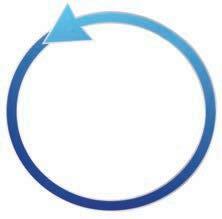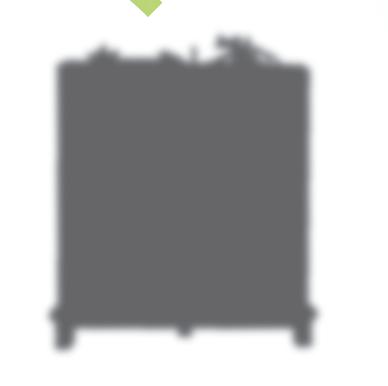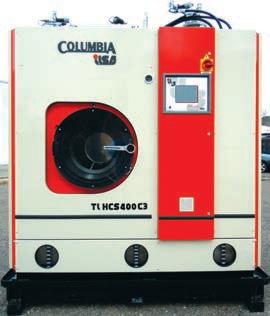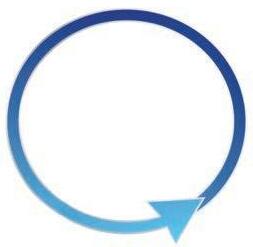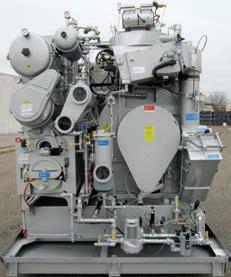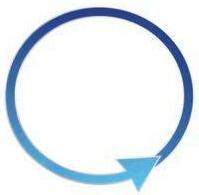


























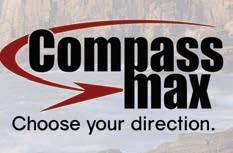







Robust and reliable cloud based options which include scalable virtual servers, geo-redundant backups, security and support/upgrades.

Compassmax is a trusted technology partner with 28 years of service to the drycleaning industry.
Increase revenue with powerful Compassmax marketing tools which include automated emails, customer promotions, frequent loyalty programs and data mining.
We are making investments in product research, development and innovation.
Compassmax has dozens of unique and customizable features to boost your success.









Simple to navigate screens with two distinct interfaces: touch screen and keyboard.
Feel secure in your Compassmax software investment: from tokenization of credit cards to reliable secure data.
Full featured point-of-sale software platform that combines simplicity and proven competence.

We are here for you 24 hours a day, seven days a week with an experienced and trustworthy staff.


With our proven track record, you can be assured peace of mind, quality, stable software and a solid vision for the future.
When dealing with laundry stains, your reputation rides on getting the outstanding results The Laundry Two deliver.
RiteGo® laundry spray spotter quickly penetrates to absorb collar & cuff stains, perspiration, ground-in soil and more, all without brushing. Turn to Laundry TarGo® to remove any tough oil based stains that remain behind.
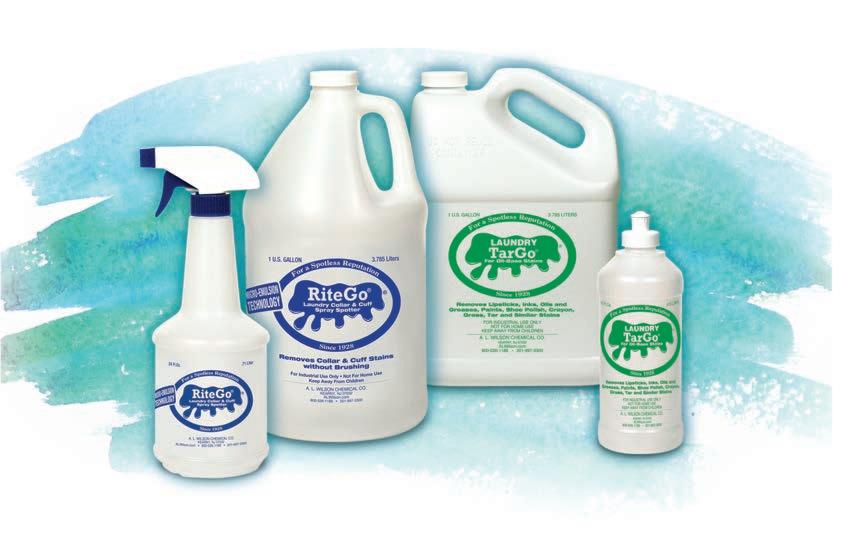
Use The Laundry Two with confidence on shirts, wedding gowns... anything you're washing or wetcleaning.
Both Laundry TarGo and RiteGo are chlorinated-solvent free, biodegradable, noncombustible and California 2013 VOC and Prop-65 compliant.
Use them to deliver stain-free laundry and wetcleaning. You'll build your reputation for quality - which is what keeps customers coming back.
Diana Vollmer
Get ready to laugh as we bring you customer stories from dry cleaners around the country. These tales are a little bit crazy, a little bit hearttouching, and lots of funny, nutty happiness.
HELP


Tim Burke, Editor

Aware Spilled VOCs, or Volatile Organic Compounds, can require testing and costly cleanup. Find out where your operation stands; this is especially key if buying or selling a dry cleaner.
Stephen J. Graham
THE HIDDEN HANGER? Scan this QR Code for help in finding the hidden hanger on this month’s cover. Good luck! (Cover photo licensed by Ingram Publishing)

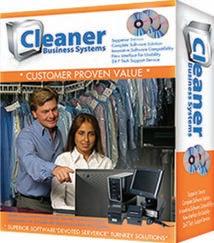





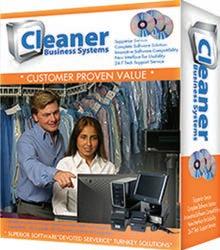

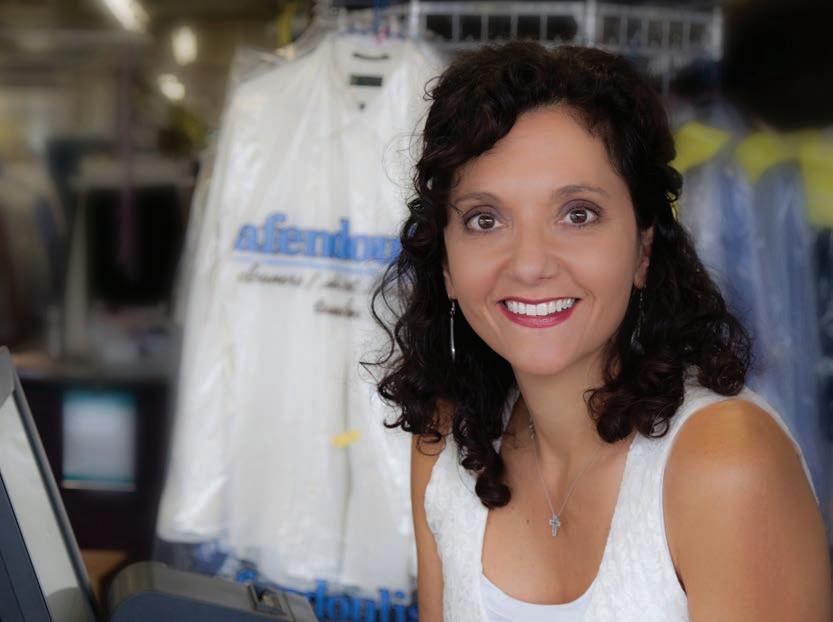
“The support from CBS was great. Even before we signed up, they were responsive and flexible in their approach. They have helped our team become more efficient.”

















“I don’t have to rely on anybody for information. I can see immediately what I have for inventory, orders and accounts receivable.”




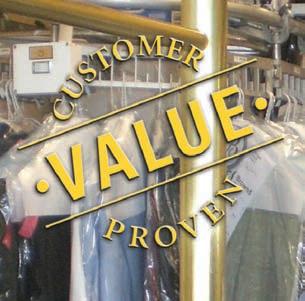
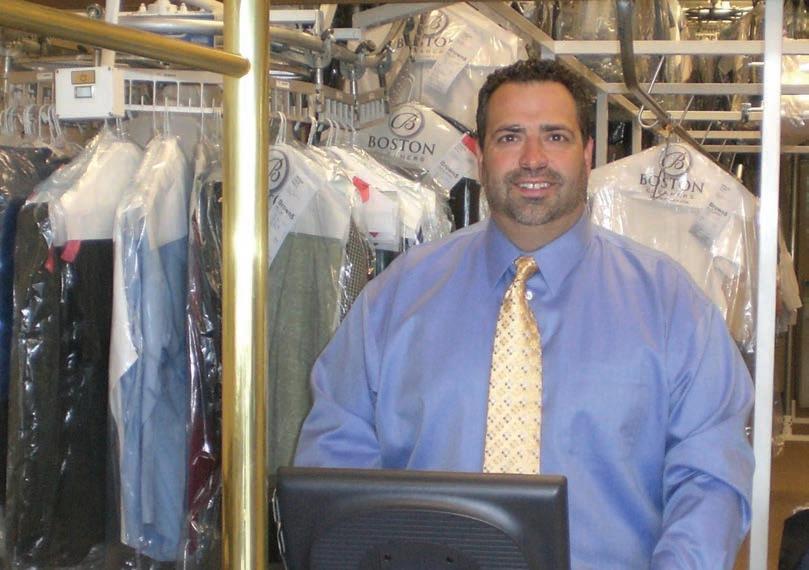
I’m going to slice this month’s message into three delicious pieces.
One: How much time do you spend at drycleaning industry events?
At the recent Fabricare show in Long Beach, Calif., a drycleaning store owner from the West Coast told me that he loves the “see-and-be-seen” action of the industry shows. He enjoys talking to exhibitors and just catching his breath from the routine. Time and money very well spent, he nods. Check out my wrap-up article about Fabricare ’16 starting on page 38.
With other industry shows, training seminars, and events on the horizon, such as Clean ’17 returning to Las Vegas in June, take a look at your budget and find a way to gain some muchneeded visibility ... and work in some R&R!
Two: On Friday, Oct. 14, we will close entries for American Drycleaner’s 56th Annual Plant Design Awards. This is a chance to get your new plant or renovation recognized! See the story on page 36 with contest details, past winners, and the address where you can enter the Plant Design Awards online.
Don’t let this great opportunity pass you by. It’s last call! Our contest is free to enter, and the entry form is easy to fill out. Do it today!
Three: This is the issue with the ‘Spurred On’ by the Crazy story you’ve been waiting for. Check out the funny and memorable customer stories from dry cleaners across the country, starting on page 6. Also, we bring you our cover story on marketing, Nurture Your ‘Tell,’ by our Management Strategies columnist Diana Vollmer. Popular columnist Howard Scott interviews Ron Herrmann on route sales, and equally popular scribe Martin Young focuses on seasonal spotting challenges. Plus, there are stories on topics such as social media content and environmental awareness (VOCs and your operation). Wrinkle In Time this issue will remind you it’s the spooky season and Halloween is coming. Boo!
Any which way you slice it, this issue is packed, stacked, and all that! ADC
American Drycleaner (ISSN 0002-8258) is published monthly except Nov/Dec combined. Subscription prices, payment in advance: U.S., 1 year $46.00; 2 years $92.00. Foreign, 1 year $109.00; 2 years $218.00. Single copies $9.00 for U.S., $18.00 for all other countries. Published by American Trade Magazines LLC, 566 West Lake Street, Suite 420, Chicago, IL 60661. Periodicals postage paid at Chicago, IL and at additional mailing offices.
POSTMASTER, Send changes of address and form 3579 to American Drycleaner, Subscription Dept., 440 Quadrangle Drive, Suite E, Bolingbrook, IL 60440. Volume 83, number 7. Editorial, executive and advertising offices are at 566 West Lake Street, Suite 420, Chicago, IL 60661. Charles Thompson, President and Publisher. American Drycleaner is distributed selectively to: qualified dry cleaning plants and distributors in the United States. The publisher reserves the right to reject any advertising for any reason.
© Copyright AMERICAN TRADE MAGAZINES LLC, 2016. Printed in U.S.A. No part of this publication may be transmitted or reproduced in any form, electronic or mechanical, without written permission from the publisher or his representative. American Drycleaner does not endorse, recommend or guarantee any article, product, service or information found within. Opinions expressed are those of the writers and do not necessarily reflect the views of American Drycleaner or its staff. While precautions have been taken to ensure the accuracy of the magazine’s contents at time of publication, neither the editors, publishers nor its agents can accept responsibility for damages or injury which may arise therefrom.
American Drycleaner, October 2016
Publisher
Charles Thompson
312-361-1680 cthompson@ATMags.com
Editorial Director
Bruce Beggs 312-361-1683 bbeggs@ATMags.com Editor Tim Burke 312-361-1684 tburke@ATMags.com
National Sales Director
Donald Feinstein 312-361-1682 dfeinstein@ATMags.com

Digital Media Director

Nathan Frerichs 312-361-1681 nfrerichs@ATMags.com
Production Manager
Roger Napiwocki




heer crazy and just plain ol’ funny. Heart-touching, madcap, and memorable.
You’ve seen these types of customers. You’ve smiled and laughed and shook your head in amazement over their antics, nutty peculiarities, and touching gestures.
Now, we bring some of your tales together in one place.
AmericanDrycleaner cleaners from across the country to share their favorite “customer crazy” moments, and here is a sampling.


Funny! Amazing! Touching, too! Sit back and enjoy!
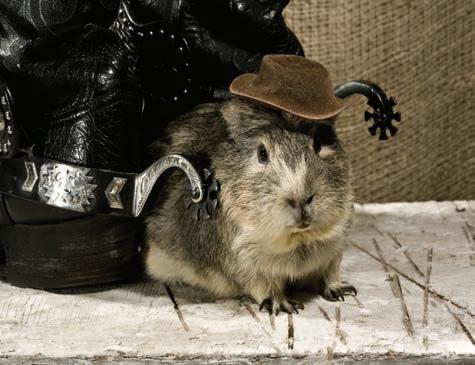
From Dave Wood, owner, Lapel’s of Littleton, Colo.:
“I have a regular customer that comes in to the store wearing spurs.
“Simple man, works with horses, owns his own business and works through all kinds of hardships and problems, ranging from broken trailers, sick animals, on call 24 hours a day, and getting thrown from a horse, ending
By Tim Burke, Editorup in traction for a couple of days.
“Other than the traction thing, not unlike what dry cleaners tend to deal with — broken critical equipment, sick or absent employees, just fighting the fight.
“Oh, yeah, he likes his shirts and jeans with heavy starch, what we affectionately call ‘Cowboy Starch.’
The shirt and jeans can literally stand up on their own with
which took another lengthy cleaning to fix it.

“Another: This customer brings in her grandfather’s World War II Navy uniform. When inspecting it, we found two complete packs of matches in the pockets complete with WW II-era advertising.
means of support!
“A second story: Customer brings in a rug that her grandfather kept on the floor of his cabin in 1920. We did a great job cleaning it but when she took it home, her kids managed to break a lava lamp all over the rug,
“Still another: A woman brings in the school mascot costume of an eagle. Her daughter is supposed to wear it but it has been less than loved. Mom was worried that it wasn’t ‘feminine’ enough. We cleaned it, fixed it and combed it out. She was thrilled, and proud of her daughter wearing it along the sidelines.
it


Point of the story: boy eagle transformed
“Last one: We have a customer that rides his bike year-round and in all weather (a challenge in Colorado), complete with snow tires and chains for the bicycle. He has special bags to carry his finished clothes!”
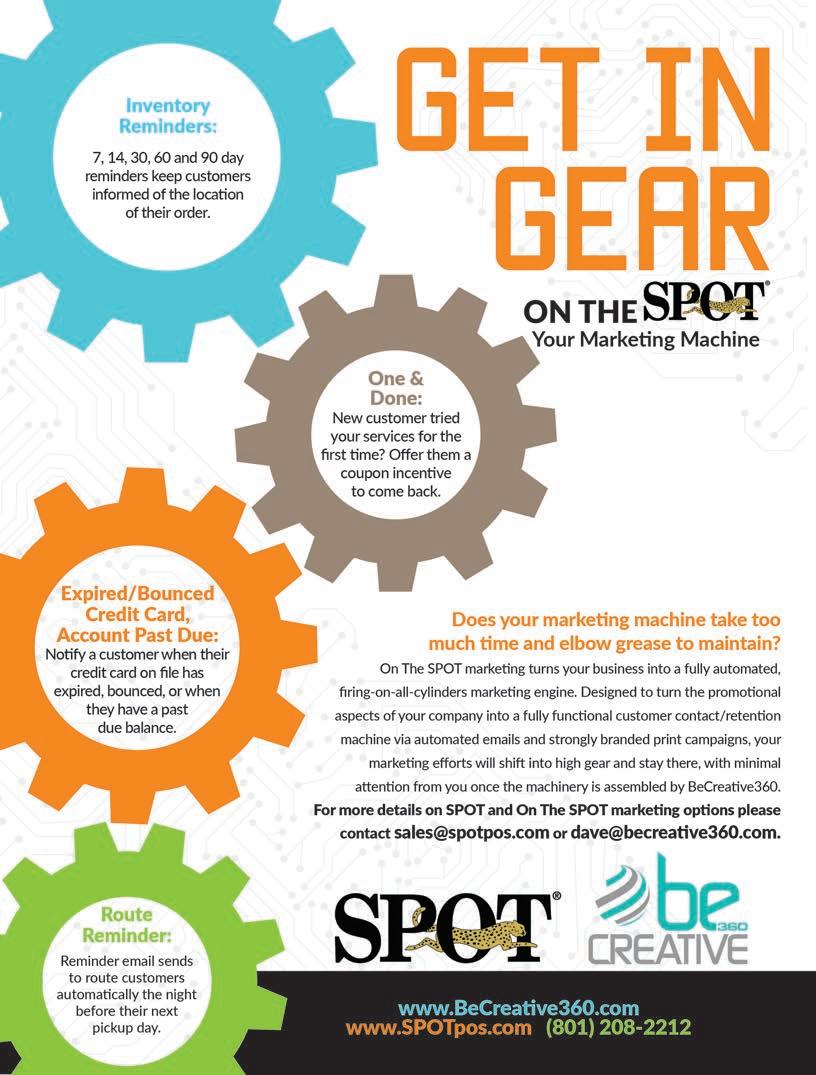
Griffin (Duke) Quinones, owner, Vapor Sudden Service Cleaners, Monterey, Calif.:
“This is our story: A customer sent in drapes for dry cleaning which were quite large and hadn’t been cleaned for quite a while. After marking in the drapes, our CSR slid them off the marking table into a basket and something shiny caught her eye.
“Along the bottom of the drapes, attached to the inside of the hemline with a safety pin, was a diamond wedding ring. It was a very impressive ring with a large diamond.
“We called the customer, who was quite elderly, to tell her we had her wedding ring. Turns out, her deceased husband had been a retired Navy admiral, and she was living alone.
“She was afraid, in the event of a robbery at her house, the diamond would, of course, be stolen. She attached the ring to the bottom of the drapes for safekeeping but had forgotten about it being there.
“We happily returned the ring to her, and all was well.”
Paul Billoni, owner, Colvin Cleaners, Kenmore, N.Y.:
“One of our best is when a woman brought in 12 pieces of clothing. She came to pick them up and took them home. She brought back a two-piece dress suit and said it was not hers.
“We have 28 cameras in and around our plant. We went to the front-counter cameras first. It showed her dropping off the clothes and, individually, we could see the garments going into a counter bag.
“The suit in question was clearly seen and the label was very visible. The label actually had some discoloration on it from a piece of mask-
ing tape that I think came from a thrift store, and this was visible on the video.
“We called the customer and let her know our findings. She did not believe us, and we invited her in to view the video. When she saw the video, she just looked at us, shook her head and said that we doctored the tapes.
“We were very polite and respectful as always but in light of what we saw on the videos, we were not going to do anything further. Within a week, we were summoned to small claims court.
“We took still pictures from the videos of her dropping the clothes off and when the judge viewed all the evidence, he asked her what she wanted.
“She told the judge she just wanted her clothes back. The judge commented that the clothes she brought into the court are the same clothes in the video.
“She told the judge we did a good job of doctoring the tapes. The judge did a wonderful job holding back a laugh and said he would reserve his decision and we would receive it in the mail.
“We won, thank God, but it was quite humorous.”

Mike Nesbit, president, MW Cleaners, Houston, Texas:
“I had a customer that picked up her cleaning and immediately pulled up the plastic. For anyone that has been in the business, you know that
American Drycleaner, October 2016
is always a sign for things to come.
“‘Sure enough,’ she exclaimed. ‘You didn’t get my spots out!’
“The CSR looked at the garment but couldn’t see a spot. She said, ‘I am sorry. I don’t see any spots.’
“With a more emphatic voice, she screamed, ‘Are you blind?! I would like to see the manager.’
“So the CSR came and got me and explained, ‘There is a customer up front screaming at me about a spot we didn’t get out and I just can’t see it.’
“Bracing myself for the confrontation ahead, I walked up with a big smile and asked, ‘How can I help you?’
“‘You can help me by getting this spot out,’ she said. ‘I thought this was a reputable place. Certainly considering what you charge, you should be ashamed of yourself.’
“I looked at the garment and, not unlike the CSR, I couldn’t see a thing.
“I said, ‘I am so sorry but can you point out where the stain is?’
“By this time, she was in a rage. ‘Are you kidding me? You can’t see that?’ As she pointed, I still saw nothing.
“Then my light bulb went off. ‘Oh, yes, I see it now.’
“She replied: ‘Good! I thought you were blind.’
“I said, ‘Please forgive us and let me work on it for you. Can I get it to you tomorrow?’
“She replied, ‘Yes, but let’s get it right this time.’
“As she exited the store, I pulled down the plastic and
“We had a customer questioning our employees if they had any hidden tattoos. (What?)”
— Rita Foley, Regency Drycleaners

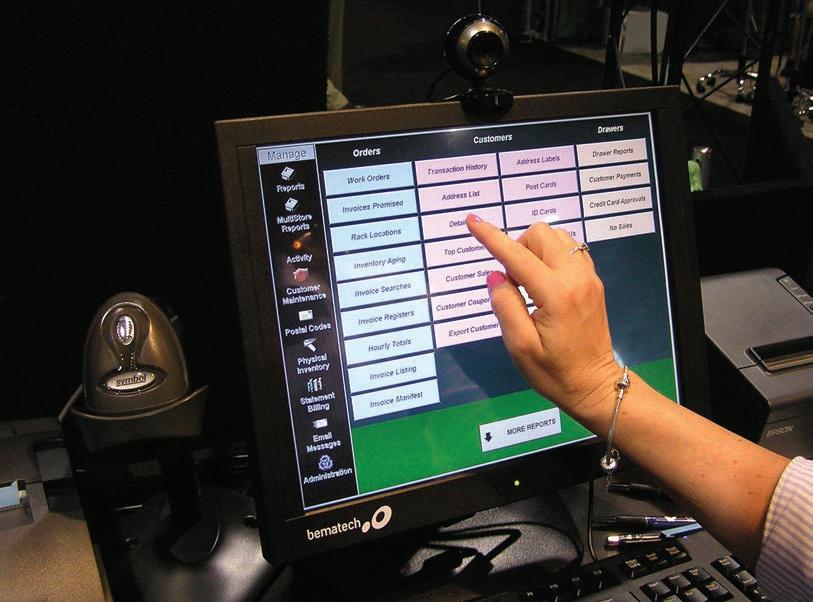
put it right back on the conveyor. My CSR looked at me as if I was crazy, and I explained, ‘No, it is her that is crazy!’
“Next day, she arrived and went through the same routine. She anxiously pulled up the plastic and said, ‘I see that you got it out. Why didn’t you do that the first time?’
“I just smiled, all the while thinking what a hard way to make a living!”
Rita Foley, president, Regency Drycleaners, Durham, N.C.:
“We’re in a college town with Duke and UNC colleges. So it gets a little crazy here. One thing we work hard on every day is our customer service. Most customers are normal. Then there are these:
“First up: we have one customer who comes in to the cleaners three times a day, every day. He brings in a couple of items each morning, stops in at lunch to say hi and ‘check’ on his order, and is back after 5 p.m. to pick it up. It’s nice to know he is always checking on the store!
“Next: A customer who routinely comes in with a lamp, a smoke detector, and other small appliances and wants to know if we can repair them. Sometimes our manager helps him figure out what is wrong. He also brings his dry cleaning in, so he knows we are a dry cleaner.

“Then there’s this: We had a customer questioning our employees if they had any hidden tattoos. (What?)
“Next one: We had a 14-year-old
girl (14!) drive her mom’s car right through the front of our store. Her mom had a revoked license.
“There were chairs for customers on the other side of the outside wall that she went through. We were very fortunate that there was no one sitting there at that moment.
“The craziest thing of all was that her mom would not stop yelling at
priceless!
“Next: We had a customer swear that one of our employees had worn his wife’s white jumpsuit and soiled the crotch area. (Really?)
“Then we had a first- and onlytime customer bring in a raincoat with a rubber lining that bubbled up when cleaned. She claimed she paid $300 from Jos. A. Bank.

“We took it to the store. They looked up the Registration Identification (RN) number. It was a coat that had been sold almost 15 years ago. Come to find out, she bought it at a garage sale. (People!)
“And finally: A customer anonymously mailed us a letter and $20 apologizing for picking up and not paying for a comforter in 1988. He sent us this letter in 2008 — 20 years later! That was pretty cool.”
Nolina Luna, store manager, GreenStreets Cleaners, San Francisco:
“A customer came in claiming to be missing an item from one of his recent orders that he picked up.
the building!’ (Where is Child Services when you need them?)
“OK now: A customer requested that two of our CSRs sign a form saying that it was his signature on his car title. They had absolutely no way of knowing if it was or not. What’s even crazier is that they signed it!




“What’s even more funny is that our store manager called one of the CSRs from an outside phone where he could see her expression, and he pretended to be with the ‘City Fraud Department.’ Her expression was
American Drycleaner, October 2016
“I explained our tracking system and asked him to review the detailed invoices to let me know which shirt he was missing. He pointed out the item that was in question.
“I then noticed the item description was similar to the shirt he was wearing. I kindly asked him if I could look inside his shirt.
“It’s kind of awkward touching someone you barely know, searching for a tiny bar code! I found the bar code pretty fast and, what do you know, he was wearing his ‘missing’ shirt!
“He apologized and hasn’t returned since.”
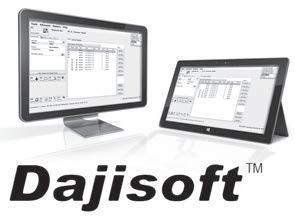

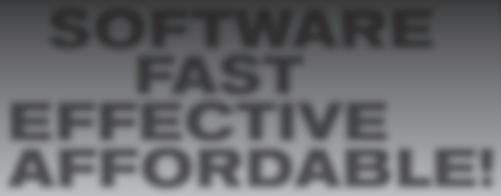











Mike Bleier, owner, Greener Cleaner, Chicago:
“So, in general, we love our customers and they love us! But there’s a certain group of people out there who are ‘Yelpers.’ You know who they are. Here’s a recent story:
“Customer sent in three king comforters, total price was something around $115. She called to get the exact amount before she came to the store to pick up. When I gave her the final price, she tried to tell me that she had called and was quoted $19.95 for each comforter by someone on our staff.

“Since we’ve never charged $19.95 or anything close to that for a king comforter, I knew she was not telling the truth, and I politely explained that all of my clerks know our pricing and nobody would ever quote any sized comforter at that price.
“So then she changes her story and states that three separate people quoted her that price. (No word on why she called three different people to ask the same question.)
“She told me that if I wasn’t willing to honor the quoted price, that she ‘knows how to write a good Yelp review,’ and even goes so far as to say, ‘I was an English major as an undergraduate and I can get to the heart of the story.’
“OK, well, here’s where, on my side of the phone, my face turns bright red in anger and I change my
tone completely. I don’t like to be threatened, and to me, this is most definitely a threat.
“In actuality, it’s more like a form of extortion! A customer trying to get away with paying 50% less than normal pricing, and if we don’t capitulate, she’ll slam us online and damage our reputation forever.
was is speak. But thankfully, we
“Well, guess what? I don’t budge. Her price was $115 and I’m sure a nasty review is being typed as we speak. But thankfully, we have many five-star reviews to combat her review should it come in!”
David Coyle, owner, In The Bag Cleaners, Wichita, Kan.:
“About seven years ago, when we were very active in hotel valet service, we got an order from the Hyatt and in the bag was one shirt.
“The shirt was tan in color but had blue dye all over it. The valet slip inside the bag simply said ‘Ford’ and had a phone number.
“You could tell the shirt was very expensive, and the tag said it was handcrafted in Beverly Hills, Calif.
“Not thinking much about it, we called and a woman answered (later found out it was the man’s personal assistant) and we asked if we could
If you have a “customer crazy” story you think is worth sharing, e-mail




have a few days with the shirt, as we thought we could get the dye out if we had some extra time.
“She said no problem, it was Mr. Ford’s favorite shirt. I thought, hmmm, Mr. Ford?
“She gave us an address in Malibu, Calif., and an AmEx card for any charges and expedited shipping.
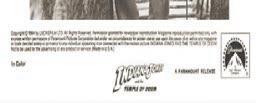
“We got the dye out of the shirt and it looked beautiful: fully restored to its original state.
“Apparently, as he would later tell me, his dry cleaner got this dye in his shirt and he always used our dry cleaner when he came into Wichita for flight training.
“Two weeks after the shirts were mailed, I got a large envelope with a Malibu return address.
Editor Tim Burke
We may share it on Facebook and/or perhaps in a future issue of this magazine.
Tales like these from “over the counter” prove that in this great big world, there’s a never-ending cheerful supply of crazy customer encounters—joyful and memorable!
To steal a famous movie title, it really and truly is a “Mad, Mad, Mad, Mad World!”
“And lo and behold, we saved Harrison Ford’s favorite shirt and he sent me a signed photo!
“It was very thoughtful of him to take time out of his busy schedule to show his appreciation for a little old dry cleaner in Kansas!” ADC
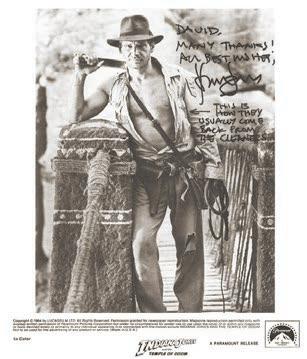
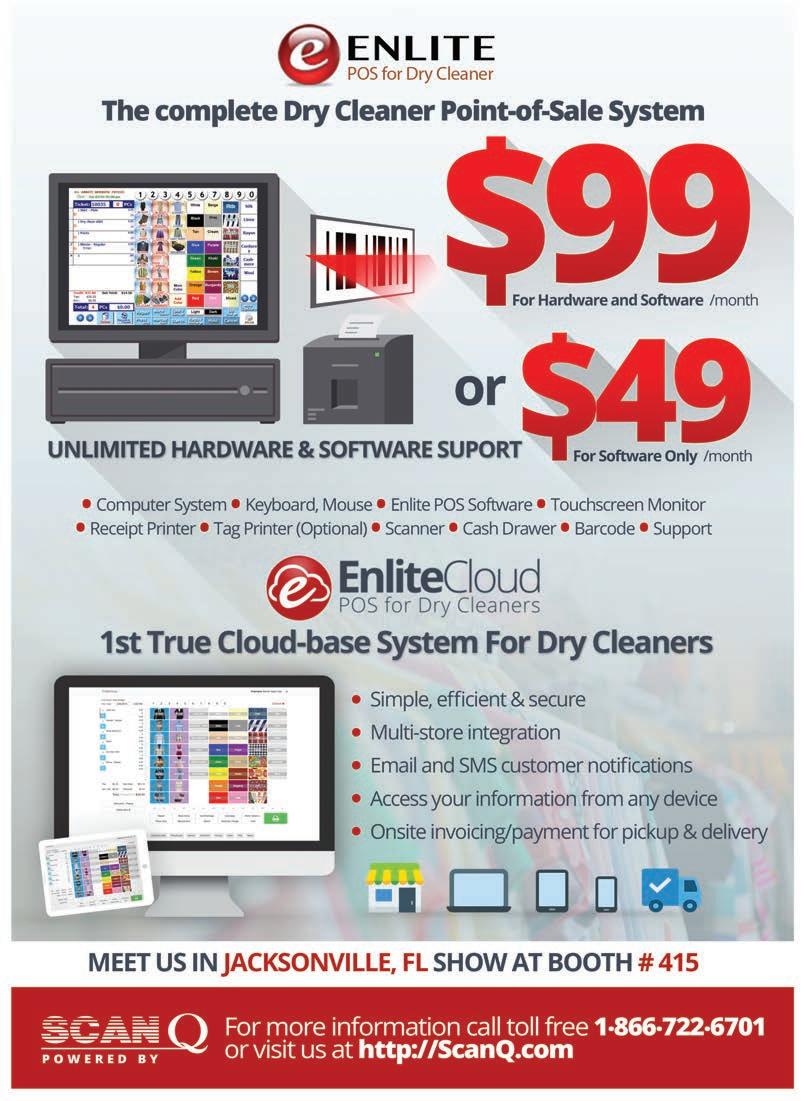




As owners and managers of a fabricare operation, marketing and customer relations are necessary ongoing projects.
You may see this dual duty as enjoyable and interesting; as a tremendous challenge; a necessary evil; or, in the worst, most disastrous case, to be ignored.
You may spend more time than warranted. You may neglect it despite the need. You may even determine that it is a duty better delegated to someone else, internal or external.
Regardless of approach, there are general plans and budget issues that require executive oversight. You need the right mix of old-school tradition and hot new media.
As always, for effective project oversight, the essentials must be: clearly defined goals and desired outcomes, accompanied by adequate and reasonable resource allocation.
Here are some goals to consider as part of your marketing plan:
• Retain the maximum number of current customers;
• Maximize the share-of-wallet of each customer
(both existing and newly acquired);
• Attract as many new customers as possible;

• Attract a new customer segment;
• Show the benefits of doing business with you;
• Highlight the ease and convenience you offer; and





• Improve the content, timeliness, and variety of channels of communication.
These objectives are not mutually exclusive. They do, however, need to be prioritized and weighted to convey a clear, consistent message to the selected audience you are addressing with any given message. The messages also need to be frequent and interesting enough to attract the mindful attention of the intended audience.
To achieve your desired outcome, the message has to break through the radar screen to the receiver’s conscious awareness.
First, you must grab the attention of your target audience and then keep their attention long enough for them to absorb your message.
How many times have you noticed a unique ad but can’t remember the product it was pitching?


According to a study from Microsoft Corp., one which has been largely circulated on the Internet


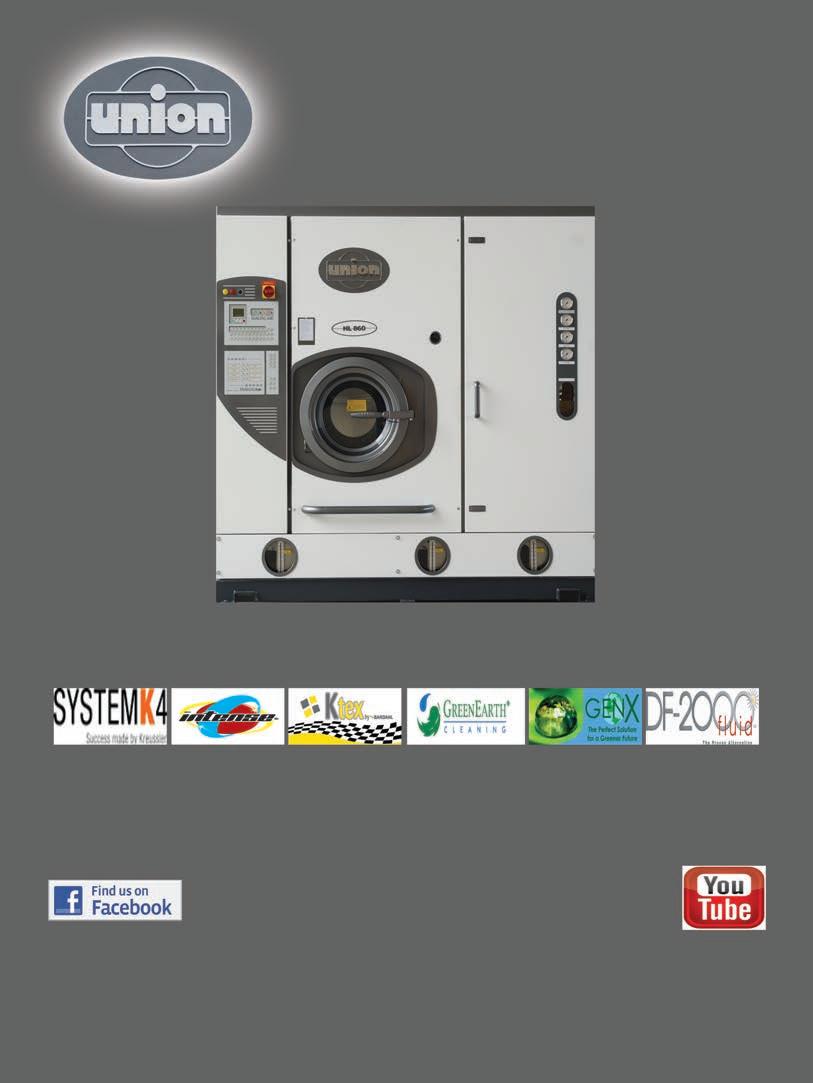

this past year, human attention span is now down to 8 seconds (less than a goldfish’s, at 9 seconds). That is a short window of opportunity!
Let’s examine the various listed intentions and consider proven ways to create attentiveness resulting in the desired responses.
Customer retention is the easiest and least expensive of all approaches to stabilize and grow your business.
Current customers are receptive because they have already chosen you, and they are easy to reach because you know them and have direct access to reach them by phone, by “snail mail,” by e-mail and by text. If this is not true for you, upgrade your point-of-sale (POS) computer system or upgrade the usage of your current system to ensure customer contact information capture.
This is basic to marketing and customer relationship management 101. As they say at Nike – Just do it!
You already know a great deal about your customers and their lifestyles. If you don’t believe this, offer your customer service team 25 cents for every piece of information they can list about a customer.
You will be amazed at the individual data gathered. Just make sure it is captured in the customer file.
Information is critical in communicating with your customers in a personalized, helpful way that is interesting to them.
Example: You may know a customer’s child is graduating from college. Send them an interview suit source and offer a complimentary first cleaning or shirt laundering between interviews.
That will increase loyalty from the parents and attract a newly minted professional who is just joining the workforce.

A simple, efficient and quasi-scientific way to find information about your customers’ aggregate lifestyle is database profiling, discussed at length in previous American Drycleaner articles.
It generates a list of interests, activities and preferences of the majority of your best customers. If you have not yet profiled, it is overdue.
Your POS system will also divulge your customers’ favorite brands and most coveted designers.
American Drycleaner, October 2016
Letting them know about a trunk or fashion show or a sale at a store will build loyalty and eagerness to open your messages. It will also gain points with the retailers that are great referral sources.
I can hear your minds rejecting this suggestion as too difficult to implement! Not so!
Run a list of your most commonly cleaned brands, then run the list of customers who bring them in, creating a perfect e-mail/SMS target list.
Ask retailer partners the following questions to get message content:
• New line arrival date?
• Planned brand events?
• Available video of runway shows?
• Season design theme?
Designate an articulate, fashion-minded associate to regularly interact with retailers and let your system implement the customer communication automatically.
Auto-generated messages about ready orders, old orders not retrieved, current specials and seasonal promptings can be augmented by truly personalized messages sent periodically by the primary contact.
Yes, your customer service reps have ample time to communicate with individual customers and this should be a regular part of their job description and responsibility.
Personalized one-to-one communication is not as difficult as it appears initially. Make it part of your system.
Remember the TV show Cheers? The regulars keep going back because “everybody knows your name.” Use that wisdom to retain and grow the business with your current customer base.
Additionally, you have other alternatives that reach current customers as a group, such as in-store advertising like rotating service messages via flat-screen TV, hang tags on orders, and graphics-adorned vans driving through neighborhoods. Remember, it takes multiple impressions to elicit action.
The best way to increase business with any customer, new or existing, is to tell them what you do that they need, especially if they don’t know they need it.
As winter approaches, doormats are (continued)


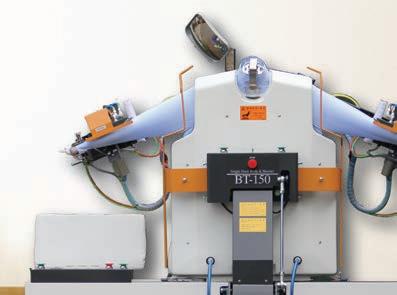

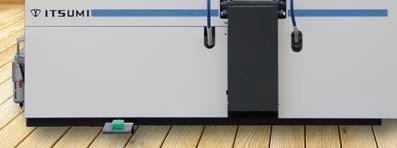
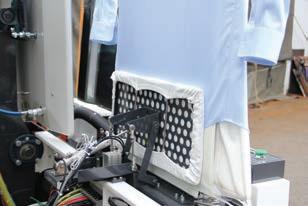
important to keep mud and snow outside. They are difficult and messy to clean at home. Tell your customers you can clean their mats regularly and will retrieve and return them on the schedule of their choice.
You can also buy the mats with a payback in a few weeks, and they last for months or years. Provide a complimentary service to your route customers for a week or two and you will be pleased how many want to keep it going.
Do your customers and prospects know that you clean and restore the following: flags; shoes; pillows; handbags and hats; leather and furs; heirloom quilts; bed, table, and bath linens; patio cushions; drapes and window coverings; car mats and doormats; boat, plane and RV décor; letter jackets and military uniforms; event attire and costumes; altar pieces and banners; and all the miscellany you are thinking of right now.
Let them know!
Timeliness is essential to an effective call to action. Holidays and seasonal changes are perfect opportunities to win new business.
The same things that are important to your existing customers are important to your prospects.
Prospects are just more difficult and more expensive to reach. Find them where they live, work and play. It takes more creativity to attract the attention of someone who is not already doing business with you.
Consumers are bombarded with messages on every media, so yours must be entertaining, informative and, most importantly, actionable!
If you want new route customers, make sure they can register immediately and schedule their first pickup now
Your creative, iconic van graphics can catch attention (don’t forget the roof) but the contact info must allow for immediate sign-up or the most important marketing component is lost.
When targeting prospects who work in casual environments, include basic wash-and-fold laundry services in your appeal. Give them an interactive app and flexible time/place options. They are used to being in control.
Since the future of our business requires younger customers to replace aging ones, let’s focus on millennials
and their priorities. The following lists provide insight into communication channels and events they frequent. According to Inc. magazine, here are some “Top” lists from the end of 2015:
Top Millennial Apps:
1. Yik Yak (to “find your herd”) 2. Venmo (to pay/split the bill) 3. InstaSize (photo editor) 4. BuzzFeed (for “breaking buzz”) 5. Tinder (to “meet people”)
Top Millennial Websites: 1. YouTube 2. Spotify 3. BuzzFeed 4. Elite Daily 5. Amazon
Top Purchases: 1. Craft booze 2. Donations at the cash register 3. Energy drinks 4. Tattoos and piercings 5. Organic food
Top Millennial Celebrities: 1. Taylor Swift 2. Jennifer Lawrence 3. Robert Downey Jr. 4. Beyoncé 5. Emma Watson
To win millennial business, support a good cause and broadcast it on BuzzFeed. Talk about their interests and needs. Be in front of them wherever they are, figuratively and literally.
Everyone has limited time. Give back time by adding a drive-thru, signing them to a route, managing wardrobe care, automatically scheduling rug or holiday linen pickup, and more.
Show how great they and their homes look when using your services.

Any and all of these messages can be delivered in a format and media designed to reach your specific target audience effectively and affordably, resulting in everincreasing sales and profit. ADC
Diana Vollmer is a managing director for Methods for Man agement, which has served dry cleaners and launderers with affordable management expertise and improved profitability since 1953. For assistance profiling your best customers or planning your marketing and customer communications, contact Vollmer at dvollmer@mfmi.com or call 415-577-6544.

The summer heat has faded and the leaves are giving us a backdrop of orange, gold and yellow.

The mornings are brisk and your drycleaning customers are breaking out those sweaters and jackets that were put away last spring.
Any stains left behind are now a major undertaking, due to time and heat “setting” the stain.
Does your business model include taking the time to pre-spot and post-spot a garment to impress a short-sighted customer who thought putting away a sweater for the season, without cleaning the sweater first, was a way to save money on cleaning?
Based solely on my experience, I want to throw out some estimated failure rates contrasting stains that are four weeks old verses stains that are less than 48 hours old.
After as much as four weeks, you will find less than satisfactory stain removal in a silk garment about 60% of the time.
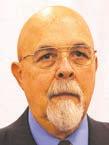
In rayon, the rate of unsatisfactory stain removal after the time period is about 50%, or half the time. In cotton, the rate appears to be 33%, while a poly/cotton blend is around 25% or about the same as wool.
Acrylic appears to provide unsatisfactory stain removal after the four weeks about 20% of the time, and polyester seems to do best, at a 10% rate of unsatisfactory stain removal.
These numbers are not scientific, by far, but they are grounded in the fact that older stains are progressively more difficult to remove. As you can see from the numbers, natural fibers are less responsive after time. Also, the darker the color, the more easily it is chafed.
Caramelized sugar and oxidized oil are the most common ‘aged stains’ encountered by a cleaner/spotter. They are also at opposite ends of the scale when it comes to removal.
Caramelized sugar is the result of allowing a substance
containing sugar to remain in contact with a garment for an extended period of time. A common example is a clear soft-drink stain that goes unnoticed.
As time goes by, the sugar will begin turning dark, much like a half-eaten apple left on a counter. The good news is the stain is easily removed by applying neutral synthetic detergent (NSD) and flushing with steam.
The hot steam will solubilize the sugar and carry it away through the vacuum nose of the spotting board. The stain will have a distinct outline and will immediately respond to the stain removal process.
Oxidized oil, on the other hand, is one of the most difficult stains to remove. It is often confused with caramelized sugar. But upon close inspection, the cleaner/spotter will notice that there is discoloration that has “wicked” its way along the yarns to form a noticeable cross pattern along the outer edge of the stained area.
This cross pattern is what sets this stain apart and makes the identification of oxidized oil relatively routine. Satisfactory removal of oxidized oil is both difficult and time-consuming.
Place the garment over the solid portion of the spotting board and apply a general pre-spotter/leveling agent.
Allow this mixture to penetrate and soften the stain for about two minutes while you are spotting
Participate in our Pink Hangers program to help fight cancer. A portion of proceeds from each purchase goes to the American Cancer Society to aid in their ongoing search for a cure.
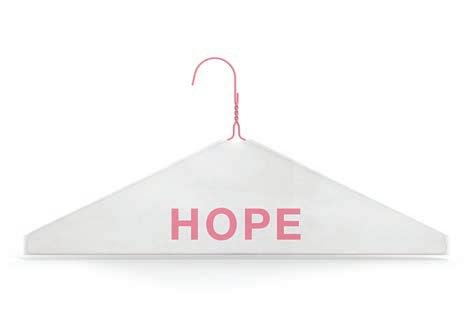
other items. After a couple of minutes, tamp the stain with your spotting brush to further break down the stain.
Apply an oily-type paint remover to the stained area and tamp again. This will lubricate the oil to assist in removal. Flush the area again with the general pre-spotter/ leveling agent, then clean as usual.
The number of attempts you make at removing oxidized oil is only limited by your patience and the commitment to supplemental stain removal contained in your business model.
The very best way to approach an aged protein stain like blood is with an enzyme digester.
When the color has degraded from the original red to a dark brown/black, the digester will soften the stain and begin to solubilize it.
Place the stain over the vacuum nose of the spotting board and flush the area with steam. This will heat and moisten the area to assist the digester.
Cover the stain with an enzyme digester; place a warm, wet cloth over the stain; then set the garment aside for a period of time. When you retrieve the garment, place it over the vacuum nose of the board and flush the stain with steam. You will probably see some of the stain removed along with the digester. You may want to repeat this process a second time before proceed ing to the next step.
After you have finished using your enzyme digester, place the stain over the solid portion of the spotting board and apply a few drops of an aggressive protein stain remover.
You may want to make up a spotting bottle that contains a standard protein formula plus two drops of ammonia. Remember to test on an inside seam for colorfastness before committing to the aggressive chemical tool.
Apply mechanical action by tamping with your brush. Place the stain over the vacuum nose of the board and flush with steam. When you reach a point where the
stain fails to respond to the protein spotter, you can finish the job by spot-bleaching with sodium perborate or hydrogen peroxide.
Place the wet stain over the solid portion of the spotting board and then apply a pinch of sodium perborate powder. Depress the steam pedal to get a wisp of steam at the nose of the spotting gun, then use the steam to melt the sodium perborate through the stain.
Once the stain disappears, flush the stain over the vacuum nose of the spotting board, then apply a couple of drops of acetic acid to neutralize the bleach.
Aged tannin stains follow the same general protocol as fresh tannin stains. The steps must be repeated more than once, and the choice of chemical tool must be one of the more aggressive formulations.

After testing for colorfastness on an inside seam, it is best to start by placing a few drops of acetic acid on the stain to put it in an acid environment.
Let this sit for about a minute, then proceed by flushing the stain with steam over the vacuum nose of the spotting board.
Move the stain over the solid portion of the spotting board, add a few drops of tannin formula, and tamp with your spotting brush.
Flush the stain over the vacuum nose of the spotting board, then repeat the process again. Any remaining tint from the stain should be spot-bleached in the same manner as the above protein stain.
Dealing with aged stains is difficult but it is worth the effort to impress your customer.
Martin L. Young Jr. has been an industry consultant and trainer for 20 years, and a member of various stakeholder groups on environmental issues. He grew up in his parents’ plant in Concord, N.C., Young Cleaners, which he operates to this day. Phone: 704-786-3011, e-mail: mayoung@ctc.net.
Remember to test on an inside seam for colorfastness before committing to the aggressive chemical tool.
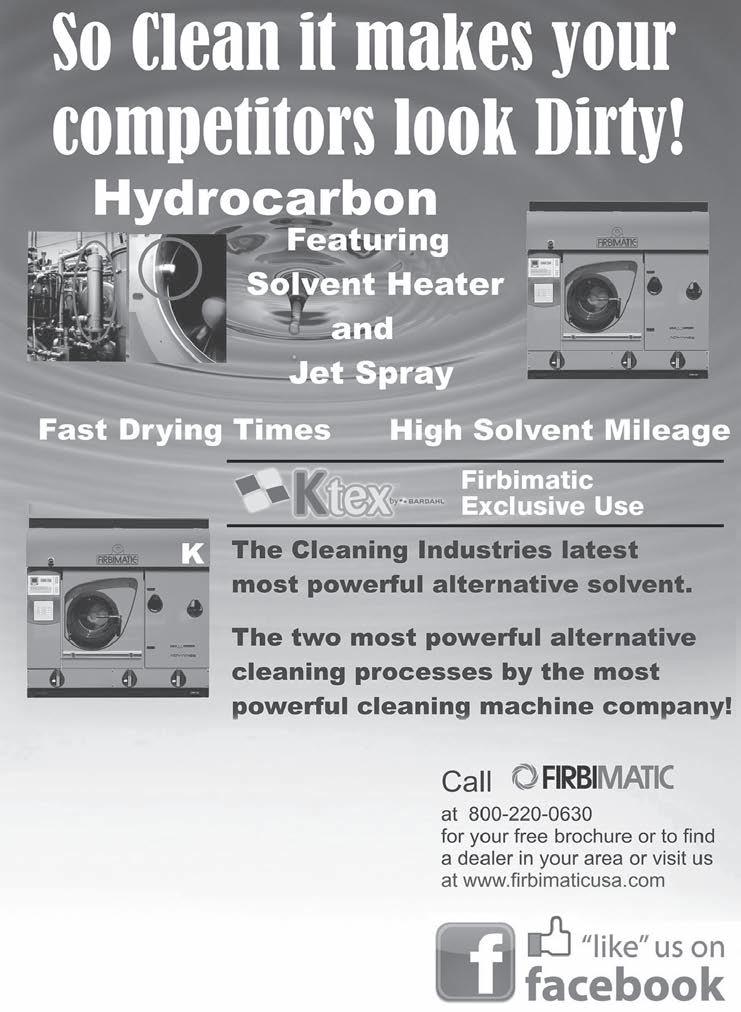
For years, dry cleaners wanting to expand would open drop stores. But these days, more and more are turning to another strategy: route sales.
Why open a drop store if you can send a truck and driver who will win neighborhood business by offering to pick up and deliver?
This strategy has the advantage of less up-front capital investment. The idea of a route salesperson is especially popular these days. There are a preponderance of upperto middle-class neighborhoods that consist of families who have money but not time.
Enter Ron Herrmann, route sales consultant for 22 years. Herrmann says he has worked with 100 dry cleaners and trained 250 route salespeople in the last six years alone.
Typically, he spends four days with a trainee. A recent aspect of his work is to train counterpeople to convert customers to route sales.
To understand route sales, I asked Herrmann about his approach.
Q: Should route salespeople go up and down the street, knocking on doors? Or should they go into a neighborhood and insert flyers underneath doors?
Herrmann: Neither. The key to succeeding at route sales is to recognize the right homes to approach. Generally, older families who’ve been in the neighborhood for years make poor prospects. It’s the young families who have busy lifestyles that make good prospects.
Look for telltale signs: basketball nets; a swing set in the backyard; a pink Barbie wagon by the garage; car seats in the vehicles; flags with the local junior high on them; a car sticker saying “Baby on board.” These are your prime prospects.
Q
: What do you do when no one is home?
To find past columns from Howard Scott or share this month’s with your colleagues, visit www.AmericanDrycleaner.com.

Herrmann: No matter how good a salesperson you are, if no one comes to the door, you can’t sell them. So you must reach this good prospect. Go next door and ask about the family. Come on Saturday or even at night, and knock, explaining that you had a late delivery. Eventually, you’ll reach them.
Q: What is your presentation like?
Herrmann: It’s not high-powered. It is simply explain ing to the prospect how convenient the service will be.
First, make the point that they are busy people, and home drycleaning delivery takes one problem off their list. Secondly, point out that we (route drivers) are knowledgeable and you can ask us questions.
Convenience and service are what you’re selling. I believe that there is very little drycleaner loyalty. A great sales presentation at the door will switch the majority over to your cleaner.
Q: What about price?
Herrmann: That’s the last thing you mention and least important. Pickup and delivery might be 30 cents more an outfit, but the convenience trumps out.
You must remember that these people think nothing of going into Starbucks and spending $5.95 for a cup of coffee, so price is not an obstacle. Possibly, for older folks, it is a bigger issue.
Frankly, I feel that convenience and service are more important than price.
Q: What do you do when you get a “maybe”? She says, “I have to speak to my husband.”
Herrmann: You’ll get a lot of those. In
Herrmann talks art of route sales
“ The key is to get the route salespeople passionate about their service.”
— Ron Herrmann, route sales consulant




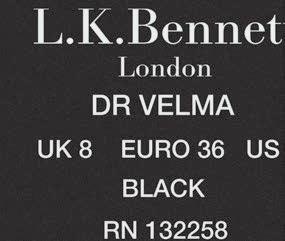
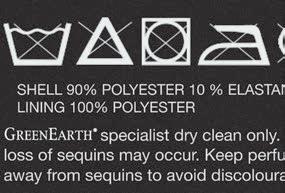












fact, people are a little more suspicious of someone knocking at the front door. With the Internet, the prospect has the ability to check out a company by doing due diligence.
Make a time when you can stop by and get a definitive answer.
Say, “I’m going to be dropping off orders next Tuesday. How about if I drop by at 11:30 a.m. and see what you’ve decided?” And be there at 11:30 a.m.
Q: What happens if you receive a no?
Herrmann: You will get a “no.” It’s all part of the selling game.
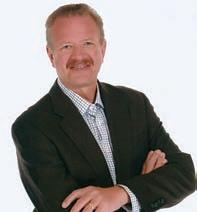
Say: “You were nice enough to listen to my presentation and to consider the offer. How about agreeing that if you have trouble with your dry cleaner down the line that you’ll give me a try? Will you promise that?”
Quite often, when they do have a problem, they will give you a try.
Also, always ask for a referral. Referred customers are the best candidates. One mistake many cleaners make is offering a $25 bounty for a referral. If your route team feels confident about your service, your driver should be able to ask for a referral without offering anything. Of course, a follow-up “thank you” card for a new customer with a $25 credit on their account would be great.
Q: How do you handle communities with “No Soliciting” signs?
Herrmann: Sometimes, you can go to the police station and buy a permit for $20. Sometimes, the gatekeeper can be helpful. Get one home as a customer in a gated community, and you can deliver.
When delivering, knock on the next-door-neighbor’s door and say, “I just delivered to the Martins next door. I know I’m not supposed to solicit, but could I talk to you for five minutes about our service?” That’s a way in, and keep burrowing in, making more and more inroads.
Q: How do you handle collections?
Herrmann: With the first order, ask for their credit card number. If they are reluctant to give it, you work with them until they trust you. If necessary, get the order
first, and worry about payment later.
Q: How do you get route salespeople to be organized?
Herrmann: Get them a day planner. It might be paper or it might be electronic. That way, when they make a date to call again, the route salesperson can put it in the planner. This little tool is incredibly important.
Q: Is route delivery increasing?
Herrmann: I would say most definitely yes. When I started this consulting business in Buffalo 22 years ago, there were three dry cleaners providing home delivery. Now, there are 11 companies in Buffalo offering home delivery. I think it’s that way all over the country.
Q: Who makes a good route salesperson?
Herrmann: Anyone with drive and determination and with an enthusiastic personality. Many times, the counter staff are perfect candidates. They know the business. They can deal with people. They’re tired of getting 20cent raises every year.
Outsiders can also succeed. I encounter a lot of people who’ve had four or five salaried jobs and they have growing families and they want more.
The best candidates are between ages 24 to 35. It’s hard to teach a 55-year-old whose had a lot of sales jobs. But there are exceptions to all rules. We recently offered a route position to an 84-year-old man.
I know that a lot of people are afraid of making cold calls and door-to-door sales, but I can alleviate their fears. Really, what they’re doing is telling about their service. It’s more telling than selling.
“ You have to pay your route salespeople well. Don’t try to be cheap with them.”
— Ron Herrmann
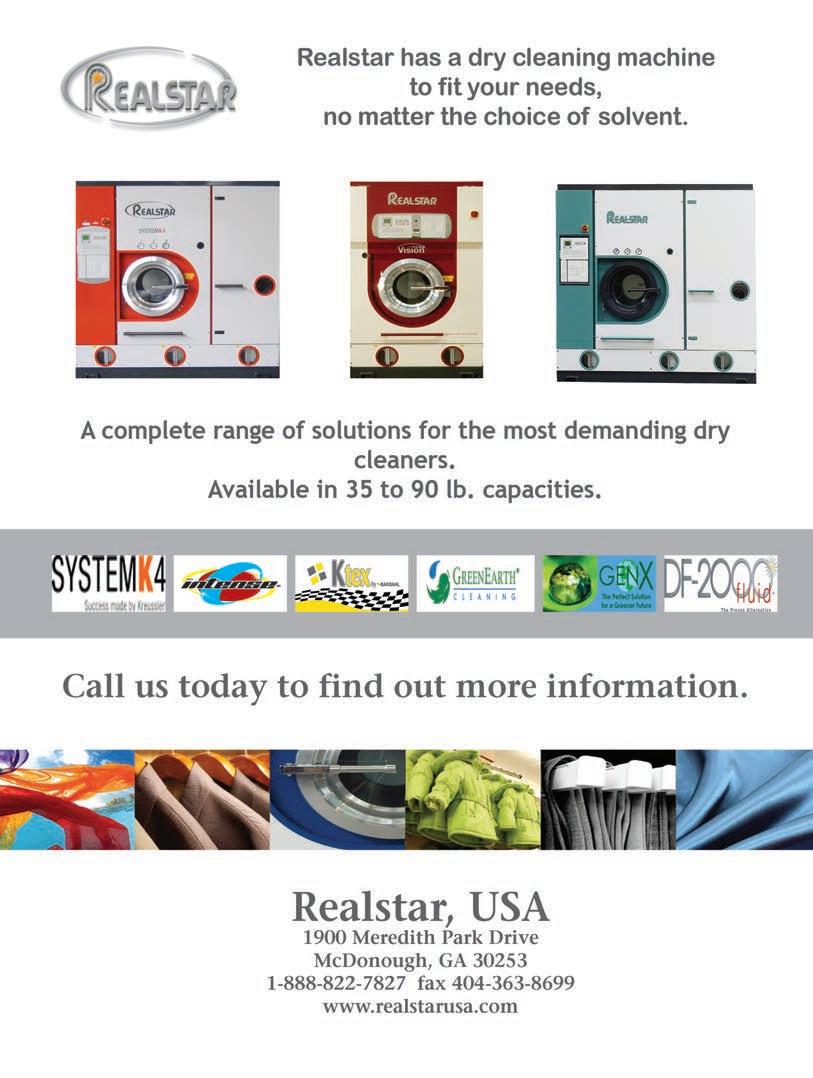
Q: What about personality?
Herrmann: Well, the individual must be enthusiastic and energetic. Smiling is important. That’s tough for me to teach. If a person doesn’t smile, he or she is probably not going to work out.
So I say to the dry cleaner, don’t hire the applicant who doesn’t smile. The key is to get the route salespeople passionate about their service. This passion is what inspires the prospect to go for it.
Q: How do you counsel trainees to handle rejection?
Herrmann: I always tell them don’t take it personally. It’s just business.
Q: In your four-day training program, do you do all the selling?
Herrmann: Absolutely not. Perhaps we have three to four hours of the applicant coming up to the door with me and watching me make the presentation. Then they begin to do it and I watch. A big part of my job is conveying the confidence that they can do it. And after making several dozen calls, they can.
Q: What can a route person expect to earn?

Herrmann: Several are earning $45,000 a year. Others earn in the $35,000 range. It can provide a good living. I tell them to do the math. If you win 10 customers a week, that’s 500 customers after a year.
My estimate is that the typical family account generates $850 annual volume. So, 500 accounts times $850 each is $425,000 volume. But even a less successful (pretty good) route salesperson should do $350,000 volume. That’s a lot of dry cleaning. The salesperson will become invaluable to the dry cleaner.
Q: What about cash flow in the beginning?
Herrmann: You have to spend money to make money. You’re paying salary plus commission plus a new customer bonus. So, in the beginning, you’re subsidizing them. But in time, they’ll make money for you.
Q: How much do you pay?
Herrmann: As I said, you’re paying a salary plus commission. You have to pay your route salespeople well. Don’t try to be cheap with them. If they make money for you, pay them what they deserve, and thank them for all their efforts, because without them, you probably
would not have most of these customers.
Q: Is your consulting practice busy?
Herrmann: I’m on the road 42 weeks a year, training route salespeople all over the country. I’m busy. Apparently, most dry cleaners feel it’s worth my fees to train route salespeople the right way. Of course, my clientele are upper-end dry cleaners.
Q: How can you be reached?
Herrmann: You can reach me by e-mailing ron@ ronherrmannsells.com or calling 623-498-0073. I also sell a sales manual online. ADC
Howard Scott is a longtime industry writer and dryclean ing consultant. He welcomes questions and comments, and can be reached by writing Howard Scott, Dancing Hill, Pembroke, Mass. 02359, by calling 781-293-9027, or via e-mail at dancinghill@gmail.com.


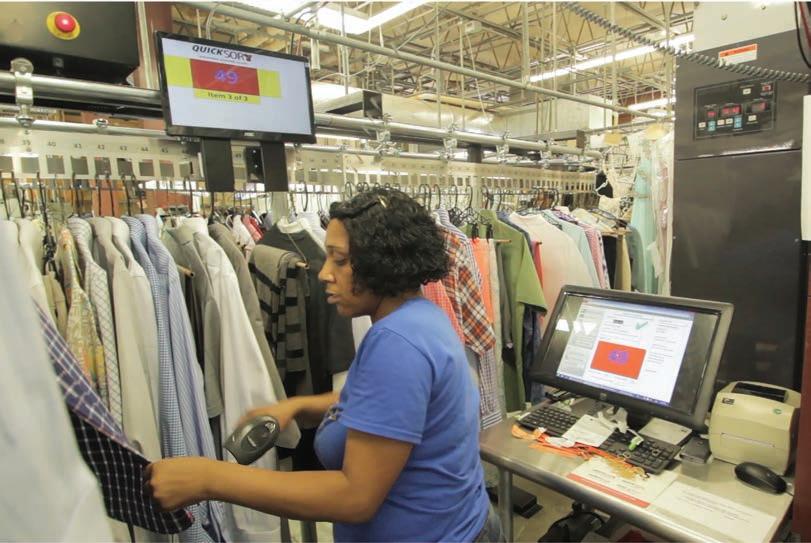




 By Stephen J. Graham
By Stephen J. Graham
The modern dry cleaner may be a weekly stop for many people, especially in areas with uniformed workers and/or higher incomes.
This frequent destination can drive business into a shopping center, especially those tenanted with other essential services, hence the persistence of this business that is often cash-based, low-profit, and family-operated.
Environmental challenges can arise for the owner or buyer of a shopping center or pad site with such a facility, due to the historical or current use of Volatile Organic Compounds (VOCs) as the cleaning agent.
Operations, if improper, may have spilled VOCs onto floor surfaces from drycleaning machine operations or stain removal by hand. If floor surfaces are cracked or other pathways to the environment exist, then soil, groundwater, and air vapor spaces beneath the building can be impacted.
Contamination at higher amounts can sometimes require testing and cleanup at up to $1 million or more, but most sites require far less, and many none at all.
The VOC cleaning agent has changed over years, and since the 1950s has been mostly a chlorinated type known as perchloroethylene, aka PCE or “perc.”

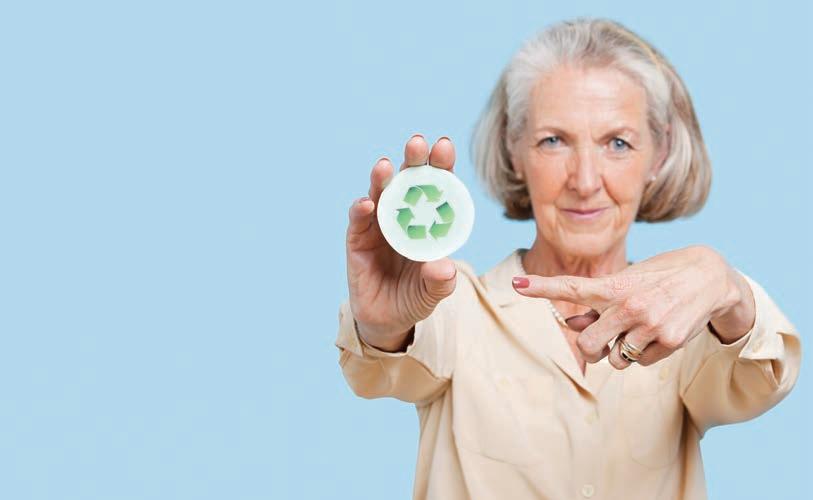
In the 1990s, “green” solvents emerged, which are still VOCs, e.g. DF-2000 or EcoSolv, yet without chlorination.

These are isoparaffins — multi-chained, saturated petroleum distillates (naphtha) — which pose reduced health risks to workers and the environment, but still have extensive regulations that have increased considerably in most states in the past decade or so.
Specific challenges to the buyer or seller can include the following:

• Environmental: If spill/leak occurs, then soil, groundwater (GW), and air media can be affected; impacted air often poses the biggest threat to human health, but GW costs most to clean;
• Environmental: Upon sale, the buyer’s ASTM Phase I Environmental Site Assessment (ESA) will often recommend a Phase II ESA (subsurface and/or indoor air testing) if perc was used at any time in history; and







• Real Estate: This affects the rest of the deal, since it can add much more legal and administrative effort, and even kill the sale. Note that proper environmental compliance paperwork and photographic documentation add weight to a favorable ESA.
So what are strategies to minimize risk to the existing and future buyer or seller? Our experience in auditing and/or relocating dozens of dry cleaners the
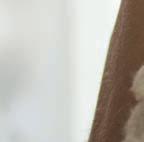
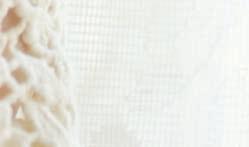




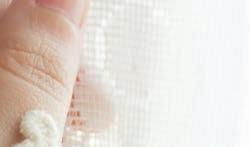


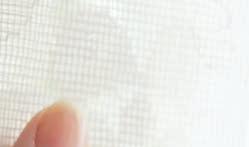

Developed to quickly and fully dry wetcleaned textiles without damage or wrinkling, the Poseidon Dryer eliminates air drying for catapulted productivity and unsurpassed results Offering advanced programmability, it safely removes residual moisture from even the most delicate wetcleaned fabrics. Smart engineering not only ensures a quick dry, it brings superior efficiency, durability and a soft touch. The Poseidon Dryer works in concert with high-per formance Poseidon Wetcleaning Machines and Flatwork Ironers for unrivaled results.
Professional fabricare operations rely on Poseidon to perfectly wetclean the most delicate items including tailored wool suits, cashmere sweaters, silk wedding dresses, camel hair sport coats, taffeta prom dresses, knit skirts and so much more. Poseidon offers innovative programmability for complete control over every conditional aspect of the wetcleaning, drying and ironing process.

TEXTI L E CARE SYSTE MS ® www.poseidonwetcleaning.com 800-482-3400 • 248-457-1140
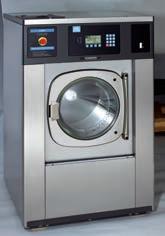




past several years, and perform ing many hundreds of ESAs and cleanups at such sites, suggests prudent, proactive steps by an owner would include:
• Whenever visiting the ten ant/space, ideally monthly or so, spend 10 minutes to scan the “Compliance Calendar” checklists established in many states. By law, operators must conduct (inspections) either weekly or monthly, for aspects such as proper machine operation, especially temperature or pres sure; verifying absence of spills or leaks; tracking sol vent use and disposal; presence of “hazardous waste” signage; and machine operations and maintenance manuals. Note that the compliance requirements are explained in several languages;
• Whenever conducting such a visit, ask if a state or local agency has audited/visited the space, and what documentation resulted. We have seen too often that landlords were unaware their tenants had been fined, incurred administrative penalties or were under dead lines to improve operations;
• Stipulate in lease or lease renewals that non-chlorinat ed solvents only are used, with penalties applicable for lease violation;
• Perform annual formal reviews, or at least prior to sale, of compliance records (prior 12 months of com pliance calendars), and verify operating certificate and permits for non-contact discharges, where applicable (air, sewer);
• Check for presence of any staining in machine area (compare to baseline photographs). Note that typi cally, as “small” or “very small” generators, less than two drums of waste solvent can be kept on-site at a time. The presence of more than this amount is usu ally a key indicator that regulatory compliance is not current;
• Keep flooring and joints between walls and floor impervious (epoxy or other coating, not just bare concrete), and repair cracks as needed. Ensure spaces with solvent spill potential do not drain directly to floor or to outside drains/sewer inlets; and
• Where possible, move active drycleaning operations out of a shopping center to off-site location, and con vert to drop store only.
For buyers, request to see the described compliance calendar information as part of an ESA.
In the event an ASTM Phase II ESA is recommended,
American Drycleaner, October 2016
which can be limited to sub-flooring vapor, but may in volve soil and groundwater sampling, it is important to understand that soil and groundwater have firm standards, but air testing results may be compared to regulatory guidelines in many jurisdictions.
The difference is the level of effort needed to bring the comfort level of both buyer and seller to an agreeable risk position.
For example, triggering a sub-flooring gas guideline may not mean remediation is needed, but further inves tigation usually is required. This can include additional testing, including in the indoor spaces housing the dry cleaner, and adjacent tenants. Note that OSHA limits for drycleaner spaces are magnitudes higher than for other tenants.
More testing can simply confirm there’s a problem.
Then other strategies come into play: modeling and/ or risk assessment, which can be straightforward and cost-effective ways to show that the actual risk to human health (air) and the environment (soil, groundwater) are within acceptable limits.
Your environmental consultant should be able to clearly explain this process in 10 minutes, then the steps to achieve this outcome can take a week, depending upon site complexity, and assuming enough data is gathered.
However, if modeling/risk assessment still shows there is VOC presence above acceptable levels (state require ments can vary widely — and many have been imple mented or updated in only the past three to five years), then sub-slab/indoor space mitigative measures will be needed, including depressurization systems, HVAC up grades, and/or soil and groundwater cleanup.
The latter should be the last approach taken to resolve VOC impacts.
Stephen Graham is senior vice president at AEI Consultants, a national environmental assessment and engineering firm based in Walnut Creek, Calif. He is a licensed professional engineer, and a licensed site professional (LSP) in Massachu setts. He has 25 years of experience in environmental due diligence, investigation, design and construction/cleanup for clients in various sectors, including commercial real estate, industrial, finance, higher education, hospitals, and insurance.
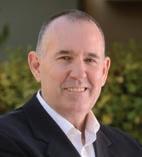
OSHA limits for drycleaner spaces are “magnitudes higher” than for other tenants, according to environmental assessment specialist Stephen Graham.




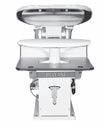


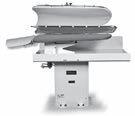
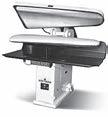
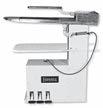
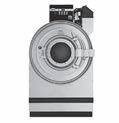
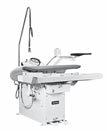


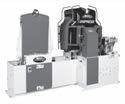
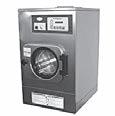

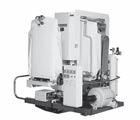








The buzzword in marketing for dry cleaners — or any industry these days, especially when it comes to social media — is content.
With all the social media out there, it’s more crucial than ever for drycleaning businesses to stand out, stop selling, and start informing.
That’s not to say that you shouldn’t offer your drycleaning or


alteration customers coupon codes they can use at your establishment. Or send direct-mail deals to their mailboxes. If you see return on investment that way, keep it up.
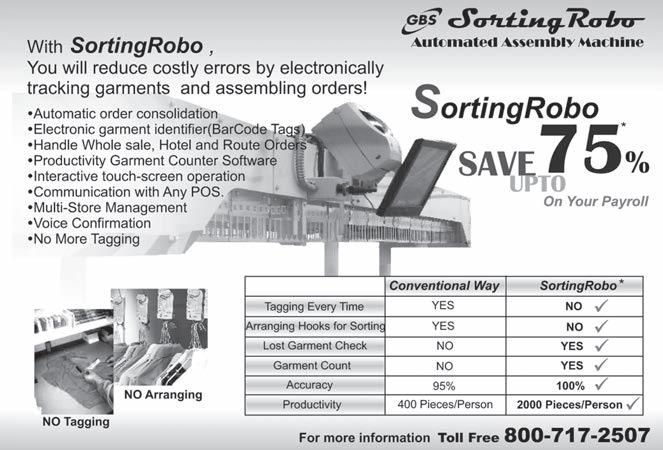


But by offering value in a social media platform, you appeal to drycleaning customers in a whole new way.
You position yourself in their minds as an expert on all things

Dry cleaners can stand out with consistent online message(Image licensed by Ingram Publishing)
dry cleaning, and from there, the business will follow. No hard sell needed.
Your social media can be another layer on your current advertising efforts, but ranking you as an authority in your field.
That’s it — and if you are consistent in your posts (or hire a writer who can be) — it’s more than enough.
So how does one position their drycleaning operation as an industry authority?

Without a hard sell. Instead, with content that is useful and valuable to your audience of potential customers.
This means that you don’t necessarily shout from the rooftops about your delivery service. But maybe a Facebook post touts the new lobby renovation on a nearby office building, with a photo of your employee who has taken on their route.
This sends a subtle message (“We do deliveries!”) while also offering content, or information (“There is a new look to a building in our community.”).
A good content writer will be able to develop topic ideas and schedule them on your Facebook page in advance, for your review. An editorial calendar for my clients shows topic ideas developed.
For instance, one day you may present a moment in history, such as when Atlanta, Ga., dry cleaner William Joseph Stoddard developed a drycleaning solvent bearing his name, as a less-flammable alternative to gasoline-based solids, in 1924.

Or you may post an inspirational saying, or a photo of your Customer of the Month.
Other posts may discuss at-home fabricare, organizing a closet, the Top 3 garment manufacturers that
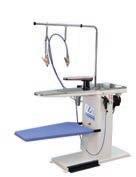

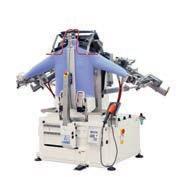
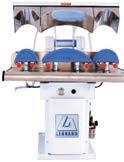
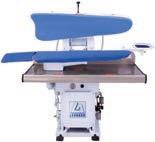

produce their goods in the U.S.; or a shout-out to a local sports team (with a photo of them playing in dirty uniforms, of course).
With a good content writer and enough posts that draw a reader in with useful and unique information, your drycleaning business will become known as a source of reliable information.
Dry cleaners, with brick-and-mortar stores, can additionally position themselves as an active member of the community where they are located, invested in the area and offering sage advice.
Drycleaning establishments can build reputation and credibility with a thoughtful, consistent social media presence that offers genuine value to busy readers.
ADC
Author Susan Shalhoub owns Plum Editorial (www.plumeditorial.com), a content writing and editing company based in Orlando, Fla.
Leonard has a full line of pressing equipment to help your business prosper Priced


ave you invested in renovations, equipment upgrades, or an entirely new plant for your drycleaning business? The 56th Annual American Drycleaner Plant Design Awards may be your opportunity to enter your project and earn some much-deserved recognition, says Editor Tim Burke.
Every year, the magazine honors the best new plants and renovation projects, recognizing them for appearance, efficiency, convenience, and comfort.
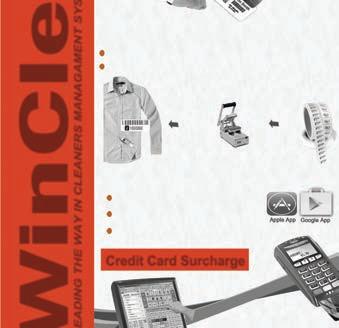
American Drycleaner is now accepting entries via online form to find the next Grand Prize Winner in its annual competition. Deadline to enter is Friday, Oct. 14.
Burke advises dry cleaners to fill out the form completely and upload a layout (blueprint or sketch) and several photos (300 dpi digital files are preferred, but color photos will also suffice) that show off the features that make their drycleaning plant an excellent place to do business.

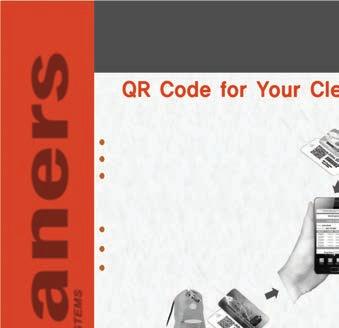
“Include any information you believe is relevant to the way your plant’s design attracts customers


and fulfills your production needs,” Burke says. “The more detailed the entry, the better! But you have to enter to have a chance to win.”
One dry cleaner will join previous winners Peerless Cleaners, Fort Wayne, Ind.; Wooven, Pompano Beach, Fla.; and Corona Del Mar (CDM) Cleaners, Newport Beach, Calif.; at the pinnacle of the industry.





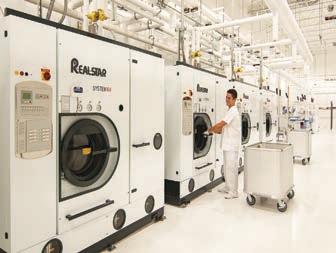


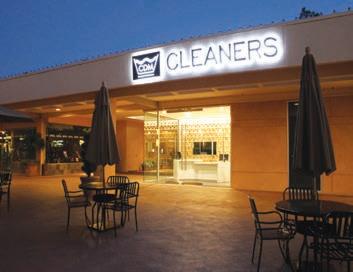

Entries are subject to verification. Contact Burke at 312-361-1684, tburke@atmags.com, with questions or to confirm that your entry was received. ADC
www.americandrycleaner.com










 By Tim Burke, Editor
By Tim Burke, Editor
Playing in the waves in the Pacific Ocean is a treat, but so was “surfing” all the exhibitor booths at the recent Fabricare 2016 conference, staged at the Long Beach (Calif.) Convention Center the end of August.
The conference consisted of four wide aisles full of exhibitor booths, several breakout educational sessions (see the Smile, Smile, Smile sidebar on pages 40-41), and, of course, the one-on-one time so vital to all businesses.
Attendee John Norton of Norton’s Green Cleaners in Placentia, Calif., says, “Good to see people come out at this show. I’ve been coming to shows for more than 40 years. Times are changing. Old-timers might not change with the times but you’re not going to get anywhere unless you embrace social media.”
He adds that “dry cleaners are a diverse group. They are changing the industry image.”
Exhibitor Yuriko Tanabe, vice president of European
Finishing/Hi-Steam, says, “This is a good show. We’ve sold a machine here already.”
Tanabe has to talk loud over the crowd to be heard from just a step away. Her booth has many visitors checking out the demonstrations, as are many booths around us. She smiles and adds, “Good traffic!”
Another exhibitor, Bill Odorizzi of Sankosha, indicates that the California show “surprises us in a very positive way. There’s a rebirth in the industry, and this is a committed group.”
“The economy has made the industry battle-tested,” says Odorizzi, noting a theme of how the strong survive and grow stronger in the process. He nods that is the case today.
There is a buzz in the air one can sense and feel from the traffic of both drycleaning attendees and exhibitor representatives walking the crowded aisles.
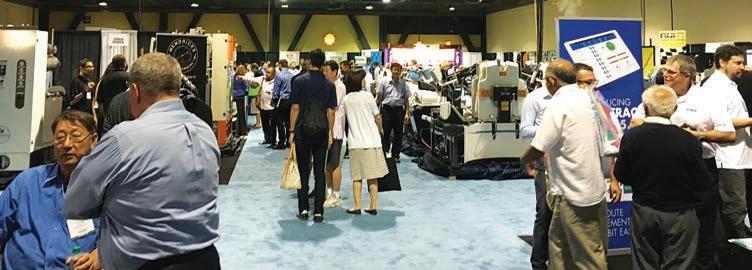
The sounds of talk, laughter and the machines in op-

eration in various demonstrations made discussions difficult at times, which is a good sign at any show, and was certainly the case on the Fabricare show floor.
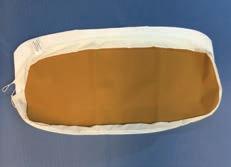
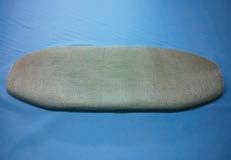
Crowds at the Unipress booth were constant all day long; same for ScanQ, Starchup, Columbia/ILSA, GreenEarth, Leonard Automatics, Garment Management Systems, Parker Boiler, SPOT Business Systems, Fabricare Management Systems, and many more.
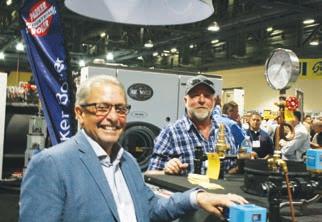
Dry cleaners attending from California and other states filled the aisles.
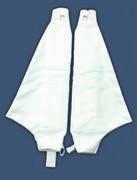
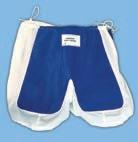

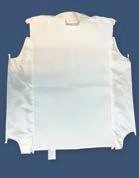

At the White Conveyors booth, Tom Ginefra demonstrates a semi-auto assembly conveyor for a group.
Over at Trevil, owner Stuart Ilkowitz mentions, “I made a connection with a New York-based dry cleaner out here. The show’s great for me.”
Cozy and energetic, the show has a healthy pulse. The smell of the ocean and the bright lights of the Long Beach promenade along the bay serve as an added gem of a backdrop.
One group of attendees walking through the Fabricare aisles includes Beth Shader of Milt & Edie’s Dry Cleaning in Pasadena, Calif., along with her husband, Michael Shader, and her father, Milt Chortkoff. They are talking with everyone they meet, and the energy on the show floor is upbeat and throbbing.
“It’s a great show,” Beth Shader says. “We’re enjoying ourselves, and my dad is stopping to see all his friends he’s known over the years.”
After the group poses for a photo, Chortkoff chuckles, “Half a dozen 8-by-10s, please.” And we share a laugh. “This is wonderful. Having a great time,” he adds.

The issue of social media comes up in conversation, and Shader notes that her store posts on both Facebook and Snapchat. She notes that its posts on Snapchat get consistently more hits nowadays.
With a smile and a wave, her group moves on and gets lost in the flow of people down the aisle.
There are many well-dressed exhibitors in business suits at the show but attendees adorned in relaxed, colorful shirts can also be seen throughout the crowd. Hey, it’s a beautiful summer day in California, and the vibe is good.
Attendees enjoyed equally the beautiful ocean vistas along with the equipment and services being displayed in the convention hall at Fabricare 2016.
Jeff Cha, sales manager at Unisec, says, “We get our name out in the marketplace at Fabricare and that’s the goal here at this show.”
The four aisles of exhibitor booths were jostling with action.
“We’re here to support the Fabricare show,” notes Fred Schwarzmann, president of A.L. Wilson Chemical Co., who was busy studying all the offerings in the aisle as he walked toward his booth. “We’re here to meet people and it’s going very well.”



The takeaway from Fabricare 2016 is this: the Long Beach Convention Center is a venue that is friendly and compact and is accompanied by great energy and enthusiasm.
Sam Ahn, president of Itsumi, seems to sum it all up as he munches a snack and smiles: “We sold a machine here! This show is good!” ADC
“All employees have to help bring in money,” says Diana Vollmer, Methods for Management, who discussed Getting Your Team on Your Side of the P & L for an audience of about 30 Fabricare attendees.
“They might tell you they won’t sell, can’t sell or don’t want to sell, or even, ‘I hate what I sell,’” says Vollmer.
The key today, she explains to the audience, is to become a trusted adviser to the customer.
“Our customers need us, trust us, rely on us to share information about our products and ser vices,” she says.



Sales can have a bad reputation, Vollmer notes. Start having your employees think of your cus tomers’ clothing as special, like their own.
She points out several examples of a successful sales culture, including McDonalds, Wells Fargo and Zappos. “The key component is that every one at these companies feels responsible.”
Reduce the friction of buying, she advises.
Get your employees to care. “Send employees out in the field to take clothes to the competi tors, see what they find out,” she offers.
“Listen to what they say when they return,” Vollmer says.
Many in the audience are taking lots of notes.
“Get [employees] to believe you’re the best opera tion,” she says before asking the audience to break up into groups and discuss ways to make their employees care more and, in the process, increase sales.
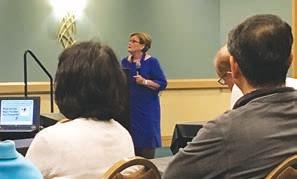
One attendee, Sassan Rahimzadeh, owner of Arya Cleaners in Chula Vista, Calif., near San Diego, says, “If you can communicate the front end with the back end, it makes things easier.”
Every customer has a different need, he adds, so treat them individually.
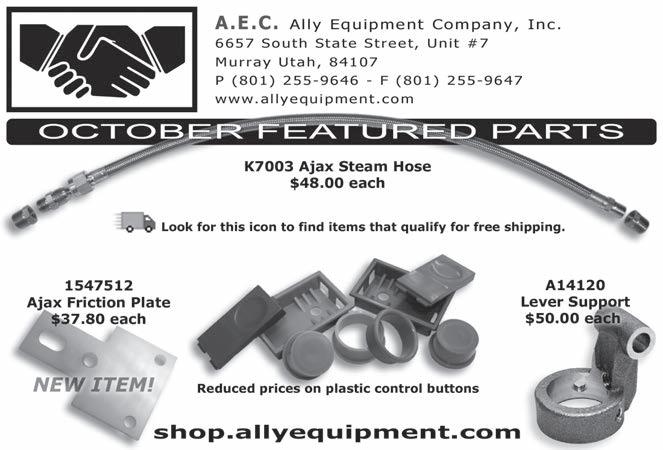
“I make my counter staff say the customer’s name three times and smile, smile, smile! Everyone loves hearing their own name,” he notes with a warm smile himself.
About upping your sales and motivating your team, Vollmer summarizes: “Plan together, share information about how wonderful customers are, and smile!”
Lastly, she leaves the crowd with this: “Make sure your people know your customers by name and face!” ADC
OnSite Fabricare and Furniture Protection Connection (FPC) recently merged to form ServeCo International Inc. (ServeCo), based in its newly constructed offices in Woodstock, Ga., just outside of Atlanta.
“The merger with Onsite Fabricare was a natural way to expand our service network,” says Tony Milano, president of ServeCo. “Their expertise in fabric cleaning, combined with their proprietary system, is a tremendous advantage for us,” he indicates.
ServeCo tapped Jeff Berkowitz to lead the newly formed service network. Berkowitz has more than 40 years of fabric cleaning experience and nearly 20 years with the OnSite system. He has been conducting training and certification classes at locations around the world.
“I’m excited to be part of a service company with the resources and experience of FPC,” says Berkowitz.
ServeCo will provide service for residential and com mercial markets, including window coverings, furniture, rugs, metal and stone surfaces, the company reports. It will provide training and certification classes in its state-of-the-art education center with both classroom and hands-on training capabilities.

OnSite Fabricare is a global leader in window cover ing cleaning and service, says ServeCo, with a network
of high-quality professional technicians that has serviced the custom window covering industry since 2000. Onsite is the recommended cleaning service for Hunter Douglas worldwide, notes ServeCo.
FPC is a leading provider of warranty programs for the furniture and bedding industries, says ServeCo. It also manages a network of in-home professionals to provide service to furniture retailers and manufacturers.
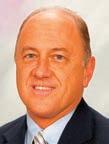
Franchise adviser Tom Coba, who has worked with some of the most recognizable names in the franchising industry, including Subway, Dunkin’ Donuts, Service Master and McDonald’s, recently joined the team at Lapels Dry Cleaning, the company reports.
“Lapels Dry Cleaning has already set itself apart with its offering of an environmentally friendlier way of dry-cleaning clothes and its first-rate customer service and offerings,” says Coba.
“The Lapels business model has been very well received in the fran chise world,” says Kevin Dubois, CEO of Lapels Dry Cleaning. “Peo ple are seeing the strength of this business model, and we are now starting to work with some very large operators from other industries.”
In working with Lapels Dry Cleaning, Coba will help the franchisor develop short-, mid- and long-term growth plans and create the infrastructure to handle that growth, explains the company. Coba will create a marketing strategy and form a franchisee council.
Coba’s résumé as a franchise executive includes a tenure as chief operating officer of 37,000 Subway restaurants in 99 countries, the company reports.
He was president of the franchise services group of the ServiceMaster Company where he led five of their brands. Coba also served as vice president of the Dunkin’ Donuts brands, Lapels says.
“Tom has brought decades of experience in going through this exact growth trajectory,” says Dubois.
“In joining Kevin and the rest of the Lapels team,” Coba says, “we are looking to build on a very strong foundation — and take it to the next level.”





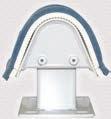


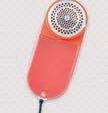
Like most college students home for the summer, Kris tine Zengeler was working for extra cash.
What set her apart from other col lege students is that her employment represented the sixth generation of her family to work for Zengeler Cleaners, notes the company.
Zengeler Cleaners was founded in 1857 in Chicago by Kristine’s greatgreat-great-grandfather, John Zengeler. The patriarch was a German immigrant and chemist who opened the family’s first clothing cleaning company, the firm says.
Since first opening the doors, Zenge ler Cleaners has survived the Civil War, the 1871 Chicago Fire, two world wars and the Great Depression.
How rare is a sixth-generation busi ness?
Vicki TenHaken, author of Lessons From Century Club Companies, Man aging for Long-Term Success, explains the significance of what such a busi ness represents.
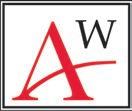
“According to Family Business Re view, only 12% of family businesses survive to the third generation and just 3% operate into the 4th generation and beyond,” she says. “My database of Century Club Companies shows just 41 U.S. companies in the 6th genera tion of family ownership, with another 15 at 7th generation or beyond.
“For Zengeler Cleaners to move into their 6th generation is an accomplish ment to be celebrated — such a com pany is a true treasure not only for their family, but for their employees and business partners, as well as their com munity.”
Kristine Zengeler is a sophomore

neuroscience major at Bates College in Lewiston, Maine, this fall. Although she’s keeping her post-college plans open, she understands her family business role represents something “pretty cool,” she says.
She recognizes that being the first member of the sixth generation to have worked for Zengeler Cleaners is “an ex perience not many people get to have.”
Tom Zengeler, Kristine’s father and president of the company, didn’t think he’d end up working in the family business, the company notes, as he studied hotel/restaurant management in college. But by 1985, he had joined as a partner.




Today, three generations of the family are active in the business. Kristine’s grandfather, Bob Zengeler Sr., thinks it is great to see another generation continue with the fam ily business. Even at age 86, you can count him among the firm’s loyal employees. Not only does he still work at the Libertyville location (one of eight Zengeler Cleaners in Chicago’s northern suburbs), but he’s there every day,
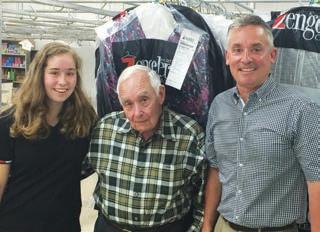
Washio, the Santa Monica, Calif.-based on-demand laun dry and drycleaning service, shut down its operation, the founders announced Aug. 29 on their website.
“We generated millions in revenue and hundreds of thousands of orders, but the nature of startups is being in novative and venturing into uncharted territory: sometimes you make it, sometimes you don’t,” read a letter from the founders posted on Washio’s home page.
“We see this as a confirmation that the on-demand model is not easily applied to the drycleaning and laundry indus try,” says Nick Chapleau, CEO for Starchup, a company that offers digital ordering and route management for dry cleaners and laundries.
“The locally branded approach to cleaning and customer growth, which we see across the industry, when paired with delivery and mobile technology, can be a powerful tool for cleaners,” he adds.
The Washio business model validated that a growing
including Saturdays.
How does a family business last this long?
“Keeping the same focus on quality that the company was founded on,” says Tom Zengeler.
number of consumers prefer to use convenience-minded technology to meet their laundry and drycleaning needs, according to Chapleau. He believes that “innovative clean ers can now leverage the efforts Washio put into educating and acquiring customers about wash and fold, delivery, and mobile technology by offering a better customer experience powered by technology” such as Starchup.
Rick Rome, president and founder of WashClub, also an on-demand service designed for laundries and dry cleaners, believes Washio’s model of outsourcing all of its service offerings is what led to its demise.
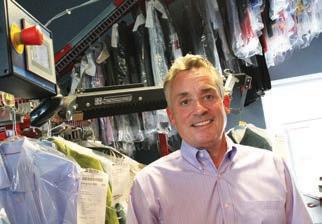
“In the drycleaning business, you need to control the entire value chain within your business,” Rome says. “This will allow for better QC (quality control), customer service, revenue growth, and ultimately greater success.
“That’s WashClub’s business model, controlling ev erything from start to finish: pickup, processing, delivery, marketing, pricing, etc.”
Washio launched in 2013, raising nearly $17 million in equity funding. It was serving six metropolitan areas across the U.S. when it ceased operations.
















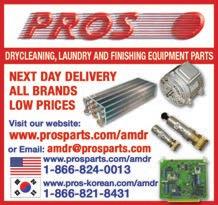

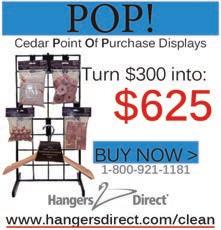
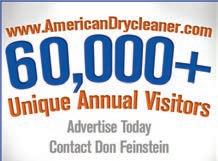
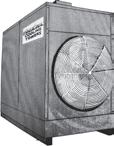
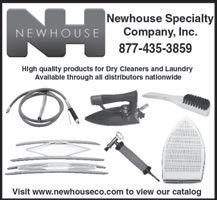
WITHOUT-A-TRACE WEAVERS—More than 50 years’ experience. We are the experts in silks, knits, French weaving and piece weaving. Reasonable prices. Send garments for estimate to: 3344 W. Bryn Mawr, Chicago, IL 60659; 800-475-4922; www.withoutatrace.com.
A.L. Wilson Chemical Co. . . . . . . . . . . . 1
Advance Cover Co. . . . . . . . . . . . . . . . . 39
Air World, Inc.. . . . . . . . . . . . . . . . . . . . 43

Ally Equipment Co. . . . . . . . . . . . . . . . 41
Cleaner Business Systems . . . . . . . . . . . . 3
Columbia/ILSA . . . . . . . . . . . . . . . . . . BC
Computer Connections. . . . . . . . . . . . . . 36
Dajisoft. . . . . . . . . . . . . . . . . . . . . . . . . . 11
Fabricare Management Systems . . . . . . . 9

Firbimatic. . . . . . . . . . . . . . . . . . . . . . . . 23
Garment Management Systems. . . . . . . 29

Global Business Systems. . . . . . . . . . . . 34

GreenEarth Cleaning . . . . . . . . . . . . . . . 25
Iowa Techniques . . . . . . . . . . . . . . . . . . . 5
Itsumi USA . . . . . . . . . . . . . . . . . . . . . . 17
Leonard Automatics. . . . . . . . . . . . . . . . 35

M&B Hangers . . . . . . . . . . . . . . . . . . . . 21
Maineline Computer Systems . . . . . . . IFC
Mustang Enterprises. . . . . . . . . . . . . . . . 33
Northern Hanger Co. . . . . . . . . . . . . . . . 37
Parker Boiler Co.. . . . . . . . . . . . . . . . . IBC

Poseidon Textile Care Systems . . . . . . . 31



Realstar . . . . . . . . . . . . . . . . . . . . . . . . . 27
ScanQ. . . . . . . . . . . . . . . . . . . . . . . . . . .
SPOT Business
. . . . . . . . . . . . .
10 YEARS AGO. Cars, computers and oil continue to drive the U.S. trade deficit to record levels. The deficit was $68 billion in July—5% more than in June and the largest month-to-month increase in nearly a year. Analysts expected oil prices to widen the deficit to only $65.5 billion in July, but the oil gap proved to be the secondhighest on record. U.S. imports from OPEC member nations totaled $14 billion. … Retail sales hit a two-month low in August as summer gasoline prices put the pinch on consumer wallets. The Commerce Department reports U.S. retailers gained a tiny 0.2% in August, following July’s 1.4% increase and June’s 0.5% drop. Auto sales were the big loser, edging up just 0.4% following a 4.3% surge in July.
25 YEARS AGO. Water contamination decision delayed— So many dry cleaners packed the hearing room Sept. 6 to testify concerning accountability for the cleanup of contaminated groundwater that the California Central Valley Regional Water Quality Control Board put off a decision on the proposed cleanup to hear a great deal of additional testimony first, Nov. 22. As reported here previously, the fate of three dry cleaners, three drycleaning equipment manufacturers and the city of Turlock, Calif., hangs in the balance. Indeed, so does the fate of the entire industry. According to the California Fabricare Institute, which has formed a coalition with IFI and TCATA to defend the industry, the state Water Control Board intends to have the industry pay for the cleanup of perc contamination throughout California. “The hearing ended up being more positive than expected,” said the CFI executive director, “the board was impressed by what they heard ... it showed that we really did our homework.” … A dry cleaner’s Code of Responsibility has been approved by the Certification Advisory Committee of the North East Fabricare Association. The code of ethics is expected to be an integral part of a voluntary certification process being developed by the association.
50 YEARS AGO. Boo! The goblins will get you if you don’t watch out. So they say around this time of year. Let’s
talk this month about one of the goblins that may already be getting you. That is the goblin of bad habits with your counter help. You can train these habits out of your girls’ actions, but they come creeping back unless you have regular retraining sessions. How long has it been since you discussed such important things as greeting the customer, getting the telephone number, and the pleasant and proper way of answering the telephone?. … An estimated 70 million tons of vinyl will be used this year to manufacture dresses, shirts, swimwear, and other garments, as “mod” designs dominate the fashion scene. Men’s vests, walking shorts and trousers are also getting the slick treatment. Who knows, cleaners may soon have to keep a can of vinyl polish on their spotting boards.
75 YEARS AGO. Wipe off that shine! How to remove the shine from a pair of blue serge pants is told in, of all places, the uniform regulations of the U.S. Navy, and reported in Business Week. The country has needed this knowledge as badly as it has needed a good five-cent cigar. What to do, says the Navy: Put a wet cloth over the shiny area, press it with a hot iron, then rub the spot gently with a piece of “00” sandpaper or emery cloth. Business Week points out that you can take the seat right out if you’re not careful, but the object is to stop the shine, isn’t it? … A technical clinic is to feature the first day of the annual convention of the Illinois Association of Dryers & Cleaners. The dates are Oct. 26-27 and the place is the Pere Marquette Hotel in Peoria. At least four Institute instructors are expected to give demonstrations in spotting, finishing and other subjects. Employers are encouraged to bring their employees along. A banquet and floor show will be staged Sunday evening. ADC
— Compiled by Tim Burke, Editor
To read more of American Drycleaner’s chronicling of the industry over the years, visit www. americandrycleaner.com.
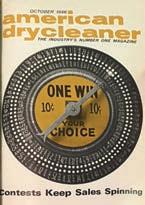
Since 1919 Parker boilers have been engineered for more effi cient operation (whether gas, oil, or combination gas/oil fired) for delivery of hot, dry steam in less than 10 minutes. And Parker boilers have a longer service life for a greater return on your investment.
Parker boilers are designed for ease of routine maintenance, annual inspections, and on site repairs, so there is less down time, more reliability. Parker boilers also have extra heavy, insulated, double-wall steel cabinet construction (Stainless steel cabi net lids and/or sides available).
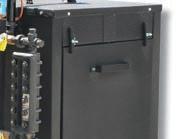
All Parker boilers are delivered complete, ready to connect to utilities. What’s more, every boiler is test fired before it leaves the factory so you can count on getting up and running as soon as possible.
Kompact mounted return sys tems are available on 3 to 25 hp boilers to save on installation costs.
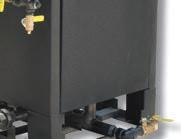



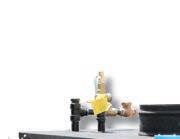
All of Parker’s superior quality boilers are available at com petitive prices and have been distributed through our region al representatives for over 60 years.

Steam Boilers

